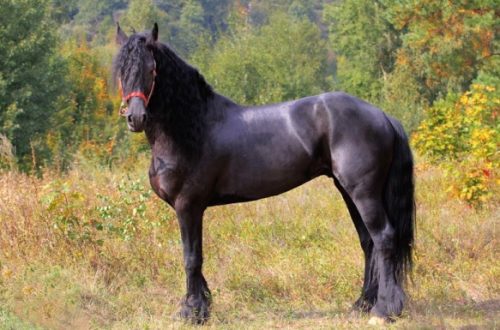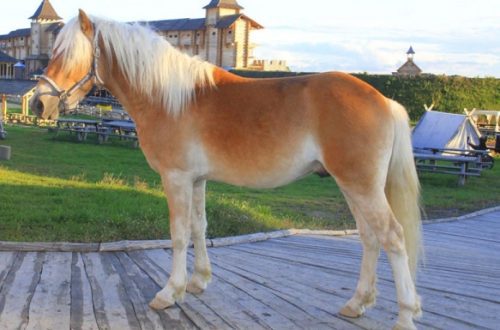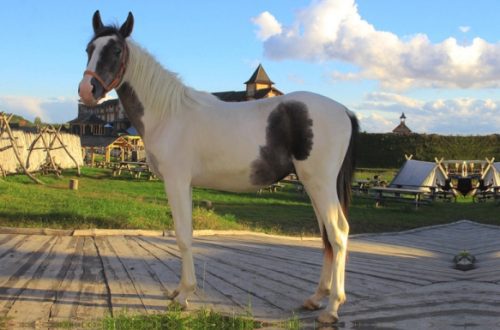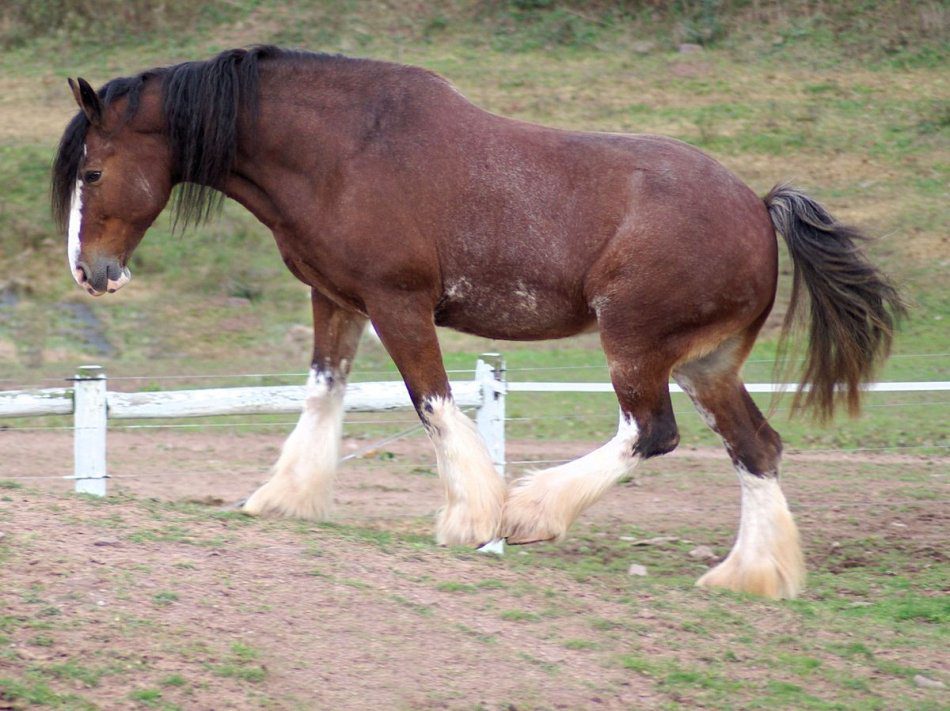
Clydesdale
The Clydesdale is one of the most popular draft horse breeds in the world. The name of the breed is due to the Clyde River, in the vicinity of which these strong men of the horse world appeared. For the first time under this name, the Clydesdales were presented at the 1826 horse show in Glasgow (Scotland).

Pictured: Clydesdale
Clydesdale is the national pride of Scotland, the embodiment of its proud spirit.
Thanks to many positive qualities, Clydesdales are popular all over the world today.
Contents
History of the Clydesdale breed
Although giant draft horses were known as early as the 18th century, the Clydesdales appeared relatively recently.
In northern England (Lancashire) large Belgian heavy trucks appeared, which were crossed with local small but very hardy mares. The result was not bad: larger than the ancestors, and at the same time harmoniously built foals. And all today’s horses of the Clydesdale breed go back to the stallion Glanser, who had a great influence on the formation of the breed.
In Scotland in the 19th century, there was a custom of renting producers: the best stallion brought income to the owner, impregnating mares of all comers. Thanks to this approach, Clydesdales very quickly became popular not only in Scotland, but throughout the UK.
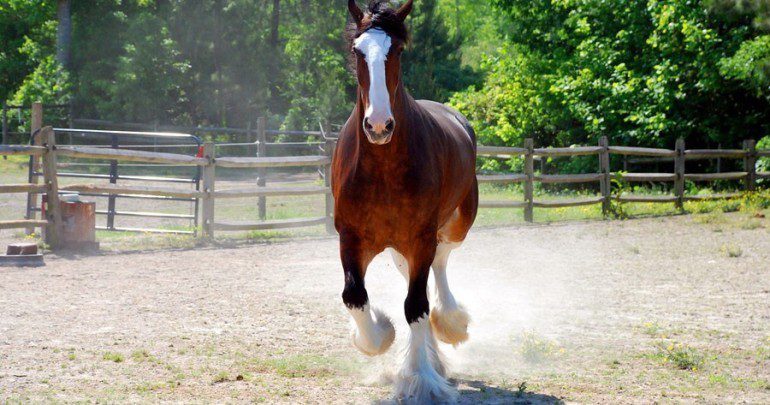
Pictured: Clydesdale
In 1877, a stud book of the Clydesdale breed was created. During this period, blood was added to them.
From the end of the 19th century, the Clydesdales began their victorious march around the world, leaving Great Britain for South and North America. And in all countries they earned a reputation as improvers of local breeds – their blood was poured into draft and trotting horses.
The Clydesdales are great workers. It was they who, as they say, “built Australia.” But this did not save them during the Second World War – the spread of technology and cars made horses a burden, and the number of Clydesdales has been steadily declining. In 1975, they were included in the list of breeds that are threatened with extinction.
However, the British would not be British if they surrendered. And in the 90s of the 20th century, the breed began to revive. Clydesdales are now bred in the UK, Canada and the USA.
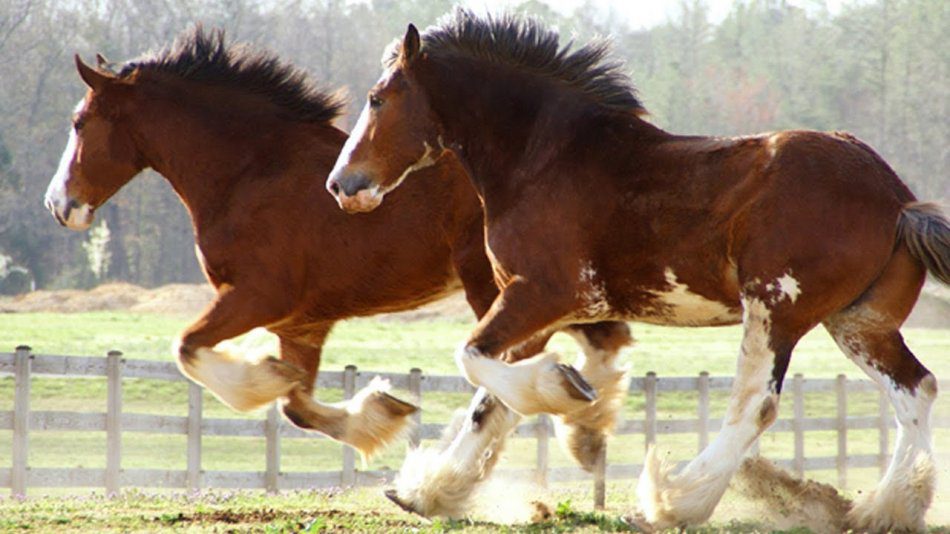
In the photo: horses of the Clydesdale breed
Description of the Clydesdales
Clydesdale is a large, powerful, but at the same time harmonious horse.
Clydesdale sizes
Height at withers | 163 – 183 cm |
The weight | 820 – 1000 kg |
The head of the Clydesdale is large, the forehead is wide, the profile is straight or slightly hook-nosed. Wide nostrils, large eyes, fairly large ears. The neck is muscular, long, has a beautiful arched bend. High withers. Long and wide chest. The body is rather short, with a short, broad and straight back. The croup of the Clydesdale is muscular, broad and powerful. The legs of the Clydesdale are quite high, powerful, the hooves are strong and round. The legs of the Clydesdale are decorated with thick brushes, sometimes reaching the body. The tail and mane are thick and straight.
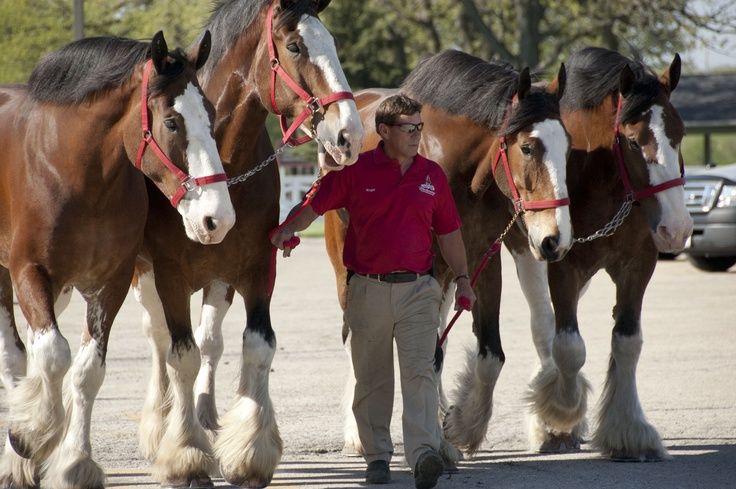
In the photo: horses of the Clydesdale breed
Basic suits of Clydesdale: bay, brown, black, rarely gray or red. Clydesdales are characterized by white markings on the legs and muzzle, with the markings on the legs sometimes extending to the body.
The character of the Clydesdale is wonderful: balanced and friendly. These horses are obedient and well trained, while being quite active. Clydesdales are unpretentious and hardy, perfectly adapt to a variety of conditions.
The Clydesdale is distinguished by its high running and energetic trot.
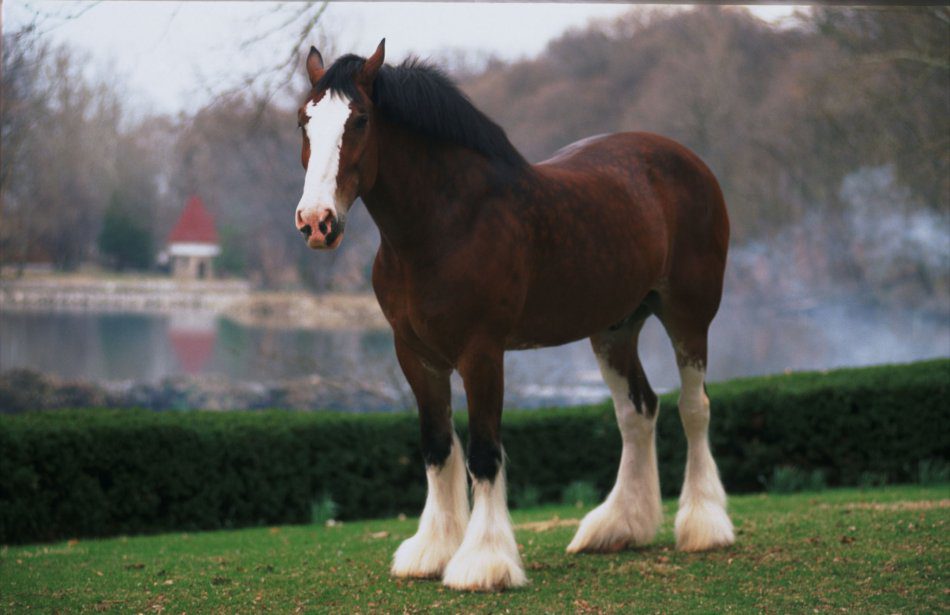
Pictured: Clydesdale
Application of Clydesdales
Due to their amazing qualities, the Clydesdales were very often used for agricultural work and cargo transportation (including for the export of coal in mines), they transported stagecoaches, etc.
The combination of excellent working qualities and the elegant appearance of the Clydesdale made these horses suitable for the trips of the English royal family. The Clydesdales also carry members of the Royal Military Band of Great Britain on their backs.
Clydesdales often compete in hauling, speed plowing, and are widely used as pleasure horses.
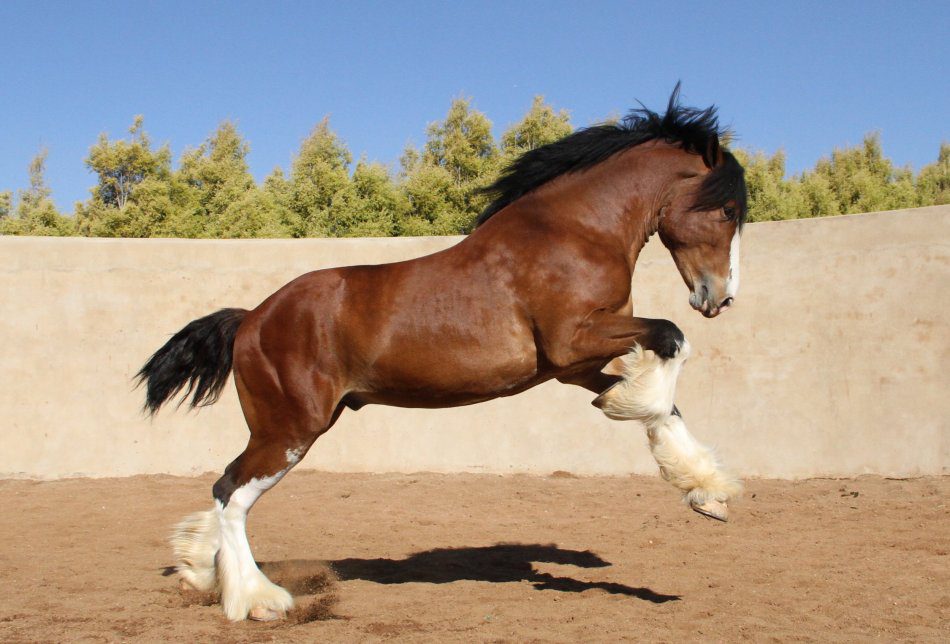
Pictured: Clydesdale
Famous Clydesdales
It is the Clydesdales that play the main roles in the famous.
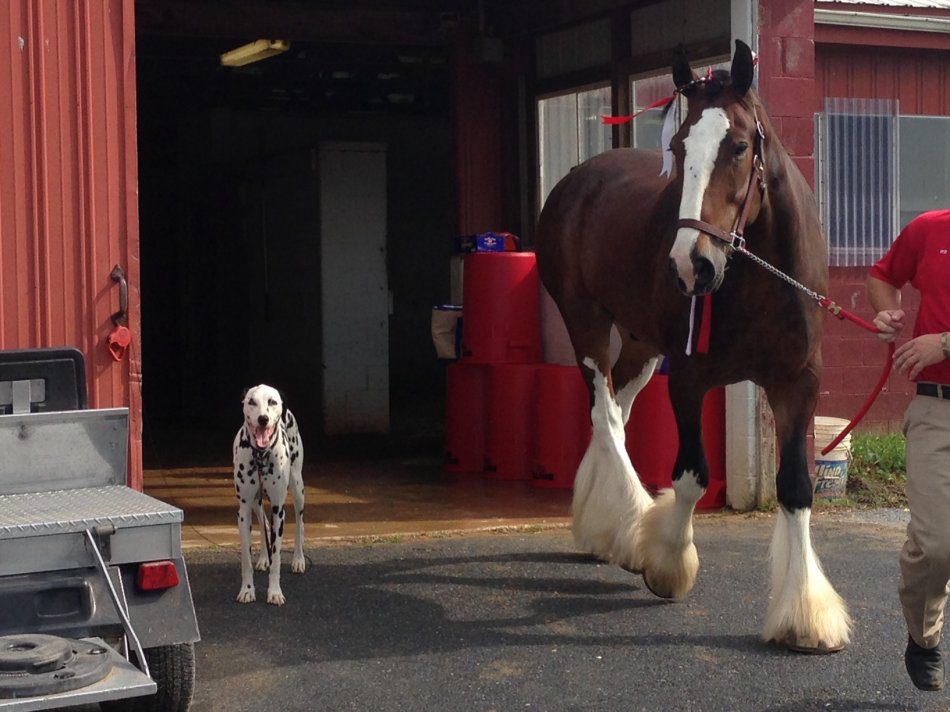 In the photo: Clydesdale in an advertisement for Budweiser beer
In the photo: Clydesdale in an advertisement for Budweiser beer
Read also:



